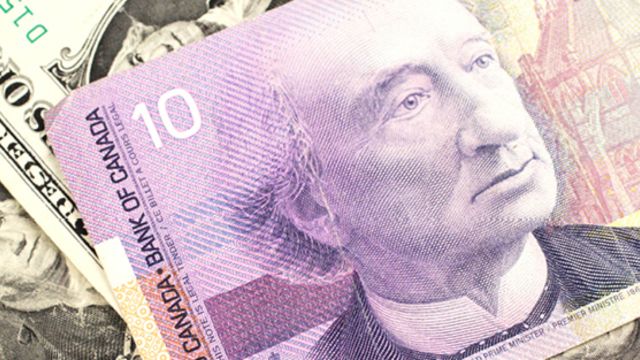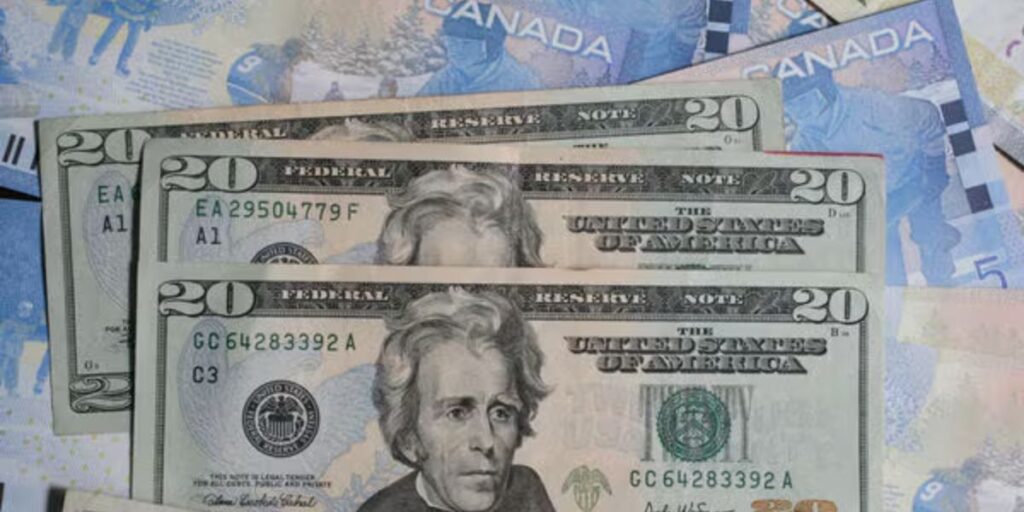The Canadian dollar recovered from a 22-year low on Monday, regaining much of its loss versus its U.S. counterpart as investors considered the prospect of Canada receiving a reprieve from U.S. tariffs.
The value of the loonie had dropped to its lowest level since April 2003 at 1.4793, and it was now trading 0.5% lower at 1.4590 to the US dollar, or 68.54 US cents. After Mexico promised to bolster its northern border with 10,000 National Guard personnel to stop the flow of illegal drugs, U.S. President Donald Trump said he had delayed imposing tariffs on Mexico for a month.
The Canadian dollar is coming back to life after bottoming out
According to a letter from Karl Schamotta, chief market strategist at Corpay, the euro, Canadian dollar, and Mexican peso are all surging higher. He noted that it is evident that markets are anticipating a similar result for Canada. However, a senior Canadian government official told the New York Times on Monday that Canada is not hopeful it will receive the same type of one-month reprieve from U.S. tariffs as was given to Mexico.
The president of the United States imposed sweeping 25% tariffs on product imports from Canada and Mexico on Saturday. The Canadian tariffs are still scheduled to go into effect on Tuesday, and Trudeau has stated that Canada will retaliate by imposing 25% tariffs on $155 billion worth of American goods. Last week, the Bank of Canada lowered its benchmark interest rate by 25 basis points to 3%, warning that a trade war may have a significant negative impact on the economy. The likelihood that the central bank will ease again in March is over 80%, according to investors.
Although clients’ actions to avoid the taxes resulted in the first gain in export orders in 17 months, Canadian industrial activity grew more slowly in January as looming U.S. trade tariffs clouded outlook confidence. Besides the Canadian dollar, yields on Canadian bonds declined throughout the curve. After hitting its lowest level since September 18 at 2.879%, the 10-year yield was down 13.6 basis points at 2.929%.
The future of the Canadian dollar as trade war begins

In December, it was verified that a trade war between the United States and Canada may cause the USD/CAD to reach 1.50. The duration of US tariffs and the Bank of Canada’s reaction are two factors that influence FX. While there are upside risks, markets are likely to look for de-escalation indications before buying discounted the oversold Canadian dollar. With the imposition of tariffs on Canada and Mexico this weekend, the US government has effectively abandoned the USMCA deal that President Donald Trump personally negotiated in 2019.
Historic 1940s Train Day-Trip from NYC Takes Its Last Journey with Gorgeous Views
Our economic team’s preliminary opinions on US tariffs are available here. We will be concentrating on Canada in this letter. All non-oil exports from Canada to the US (about USD 311 billion in 2023) will be subject to a high 25% tariff starting on Tuesday, February 4; oil exports (approximately USD 129 billion in 2023) will be subject to a lower 10% levy. Retaliatory 25% tariffs on specific US imports have already been imposed by Canada. On Tuesday, the first round (worth around USD 20 billion) will begin, followed in 21 days by the second round (worth about USD 85 billion).
Canadian dollar: BoC projections regarding the effect on inflation and growth
Estimating the GDP, inflation, and market impact for both Canada and the US is difficult because this action has been unusual in recent decades. In its January monetary policy report, the Bank of Canada presented a framework of trade war economic ramifications for Canada.
According to the BoC’s “quantitative example,” the first year’s Canadian growth will be about 2.5 percentage points slower as a result of US tariffs. After three years, the adverse growth effect would no longer exist. Remember that the scenario presented by the BoC already incorporates the mitigating effect of the initial negative Canadian dollar shock on Canadian exporters.
It is anticipated that inflation will respond differently because of the presumed gradual pass-through on pricing. Consumer prices are little affected by the BoC’s baseline in year one and by 0.5 and 1.0 percentage points in years two and three, respectively.
The BoC acknowledges that there are serious dangers of a quicker inflationary effect. In a different scenario, the CPI experiences a positive shock of 0.7 percentage points in year one and 1.3 percentage points in year two.





More Stories
After Hitting Rock Bottom, the Canadian Dollar is Bouncing Back—Here’s Why
After Hitting Rock Bottom, the Canadian Dollar is Bouncing Back—Here’s Why
After Hitting Rock Bottom, the Canadian Dollar is Bouncing Back—Here’s Why